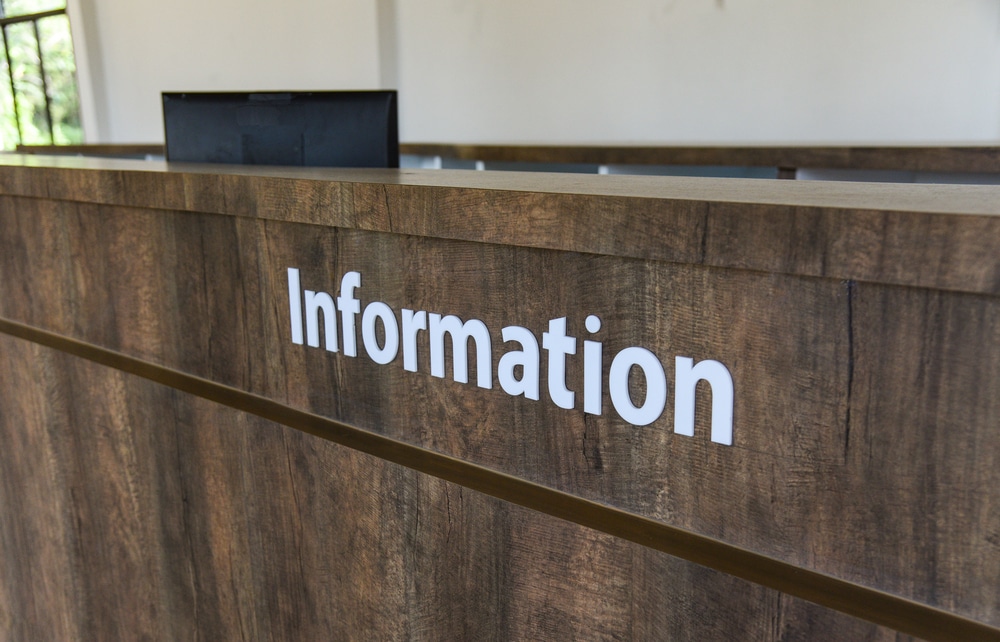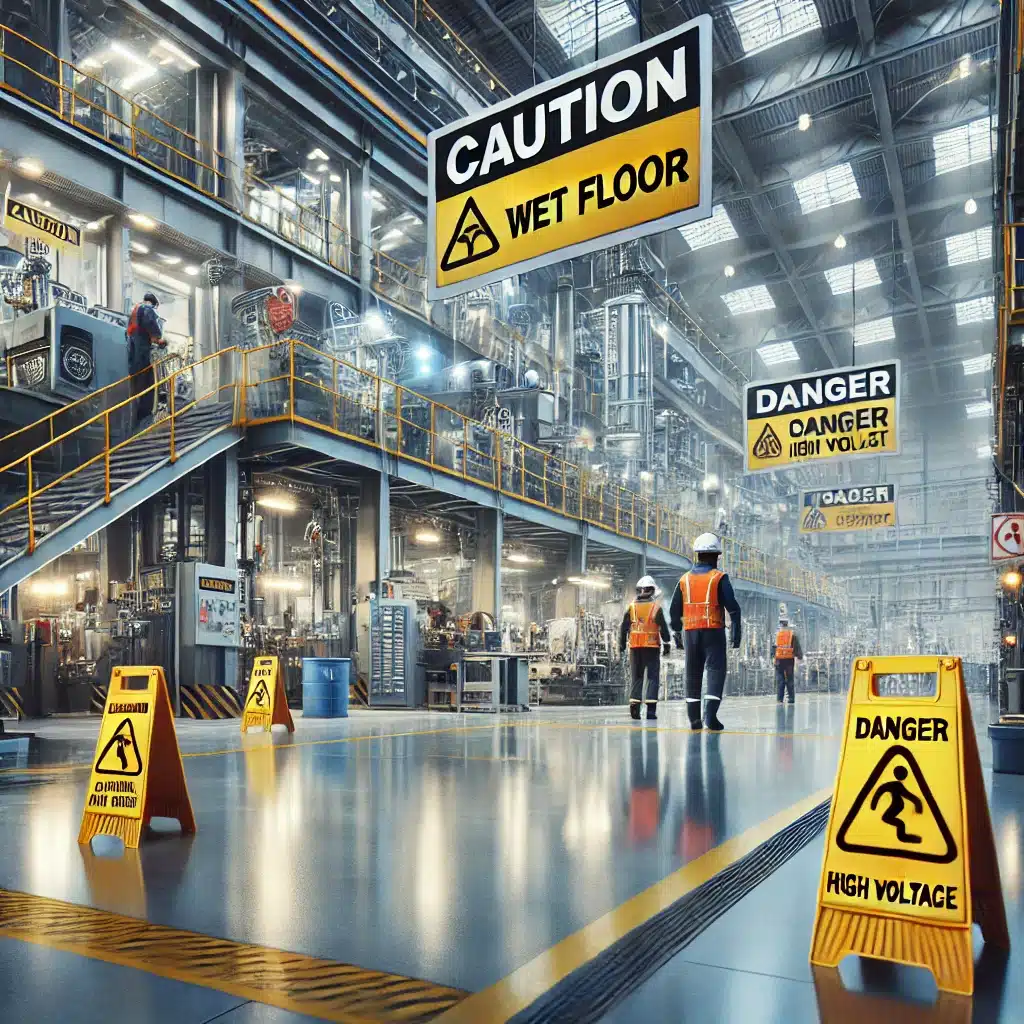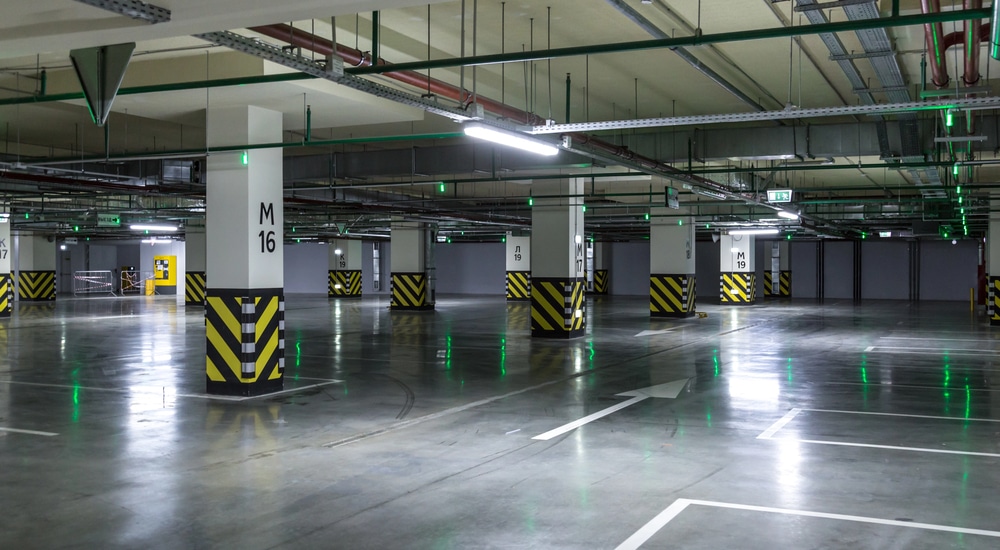Did you know that workplace injuries cost businesses $170 billion annually? While accidents can happen, many are preventable with the right safety measures in place. One of the most effective tools for reducing workplace incidents is proper safety signage. Studies show that clear, compliant safety signage can reduce workplace accidents by 25%.
At Tupp Signs, we’ve helped businesses across industries enhance workplace safety with custom safety signage solutions. In this article, we’ll explore how proper safety signage reduces workplace incidents, share actionable tips, and highlight emerging trends that are shaping the future of workplace safety.
Comparison Table: Types of Safety Signage and Their Impact
Type of Signage |
Purpose |
Key Benefit |
Example |
Outcome |
Warning Signs |
Alert workers to potential hazards | Reduces accidents in high-risk areas | “Caution: Wet Floor” | 20% reduction in slip-and-fall incidents |
Danger Signs |
Indicate immediate hazards | Prevents severe injuries | “Danger: High Voltage” | 15% reduction in electrical accidents |
Caution Signs |
Warn of minor hazards | Minimizes minor injuries | “Caution: Slippery Surface” | 10% reduction in minor incidents |
Emergency Signs |
Guide workers during emergencies | Ensures quick and safe evacuations | “Emergency Exit” | 30% faster evacuation times |
Fire Safety Signs |
Indicate fire equipment and exits | Improves response to fire emergencies | “Fire Extinguisher Here” | 25% reduction in fire-related injuries |
Mandatory Signs |
Enforce safety protocols | Ensures compliance with safety rules | “Wear PPE in This Area” | 20% increase in PPE compliance |
Prohibition Signs |
Prohibit unsafe actions | Prevents risky behaviors | “No Smoking” | 15% reduction in unsafe behaviors |

The Importance of Workplace Safety
Workplace safety isn’t just a legal requirement—it’s a moral obligation. Beyond the financial costs, workplace accidents can lead to:
- Decreased employee morale.
- Lost productivity.
- Damage to your company’s reputation.
Key Statistic: According to OSHA, businesses pay $1 billion weekly in workers’ compensation costs due to workplace injuries.
Proper safety signage is a proactive measure that helps prevent accidents, ensures compliance with regulations, and protects your most valuable asset: your employees.
How Safety Signage Reduces Workplace Incidents
1. Clear Communication
Safety signs provide clear, concise instructions to employees and visitors, reducing confusion and preventing accidents.
- Example: “Wet Floor” signs prevent slip-and-fall accidents in high-traffic areas.
- Outcome: Businesses with clear safety signage report a 20% reduction in slip-and-fall incidents.
2. Hazard Identification
Signs highlight potential dangers, such as high-voltage areas, chemical storage, or heavy machinery.
- Example: “Danger: High Voltage” signs reduce electrical accidents in industrial settings.
- Outcome: Proper hazard identification can reduce workplace injuries by 15%.
3. Emergency Guidance
Exit signs, fire extinguisher labels, and evacuation maps ensure quick responses during emergencies.
- Example: Properly labeled fire exits reduce evacuation time by 30%.
- Outcome: Businesses with clear emergency signage report fewer injuries during crises.
4. Compliance with Regulations
Safety signage ensures compliance with OSHA, ANSI, and other regulatory standards.
- Example: Non-compliance can result in fines of up to $13,653 per violation (OSHA).
- Outcome: Compliant signage reduces legal liabilities and keeps your workplace safe.
Case Study: How Tupp Signs Helped Reduce Workplace Incidents
Client: A manufacturing plant in Delaware.
Challenge: High rates of workplace accidents due to unclear signage.
Solution: Tupp Signs installed custom safety signage with bold visuals, multilingual text, and reflective materials.
Outcome: Workplace incidents decreased by 25% within six months.
Key Elements of Effective Safety Signage
- Visibility: Use high-contrast colors (e.g., red, yellow, black) and reflective materials for maximum visibility.
- Clarity: Keep messages short, simple, and easy to understand.
- Durability: Use weather-resistant materials for outdoor or industrial environments.
- Compliance: Ensure signs meet OSHA, ANSI, and ADA standards.
- Placement: Install signs in high-traffic areas, near hazards, and at eye level.
Emerging Trends in Safety Signage
1. Digital Safety Signage
Dynamic displays that update in real-time (e.g., “Caution: Machine in Use”).
- Benefit: Improves responsiveness to changing workplace conditions.
2. Multilingual Signs
Cater to diverse workforces with signs in multiple languages.
- Benefit: Ensures all employees understand safety instructions.
3. Smart Signage
IoT-enabled signs that alert workers to hazards (e.g., gas leaks, high temperatures).
- Benefit: Enhances real-time hazard detection and response.
4. Sustainability
Eco-friendly materials and energy-efficient lighting for green workplaces.
- Benefit: Reduces environmental impact while maintaining safety standards.
How Tupp Signs Can Help
At Tupp Signs, we specialize in creating custom safety signage that protects your team and your business. Here’s why businesses trust us:
- Expertise: Decades of experience in safety signage for industries like manufacturing, healthcare, and construction.
- Compliance Assurance: Signs that meet OSHA, ANSI, and ADA standards.
- Durability: High-quality materials designed to withstand harsh environments.
- Custom Solutions: Tailored designs to meet your specific safety needs.
Client Success Story: A small restaurant in Delaware partnered with Tupp Signs to design a bold, illuminated sign that increased foot traffic by 35% within three months.
Proper safety signage is a powerful tool for reducing workplace incidents, ensuring compliance, and protecting your employees. By investing in clear, compliant, and durable signage, you can create a safer workplace and avoid costly accidents.
Ready to enhance workplace safety?
Contact Tupp Signs today for a free consultation and let’s create signage that protects your team and your business.
FAQs About Safety Signage
-
What are the most common types of safety signs?
- Answer: Warning signs, danger signs, caution signs, emergency exit signs, and fire safety signs.
-
How often should safety signs be updated?
- Answer: Regularly inspect signs for wear and tear, and update them as regulations or workplace conditions change.
-
What are the consequences of non-compliant signage?
- Answer: Fines, workplace accidents, and legal liabilities.
-
Can Tupp Signs help with custom safety signage?
- Answer: Yes, we specialize in custom designs tailored to your workplace needs.
Statistics Section: The Impact of Safety Signage
1. General Workplace Safety Statistics
- Workplace injuries cost businesses $170 billion annually (OSHA).
- Businesses pay $1 billion weekly in workers’ compensation costs due to workplace injuries (OSHA).
- Proper safety signage can reduce workplace incidents by 25% (Tupp Signs client data).
2. Industry-Specific Statistics
- Manufacturing: Facilities with clear safety signage report a 20% reduction in accidents involving heavy machinery.
- Healthcare: Hospitals with proper wayfinding signage see a 25% improvement in patient and staff safety.
- Construction: Sites with visible hazard signs experience 15% fewer injuries related to falls and equipment.
- Retail: Stores with “Wet Floor” signs reduce slip-and-fall incidents by 30%.
3. Compliance and Legal Statistics
- Non-compliance with OSHA signage standards can result in fines of up to $13,653 per violation.
- Businesses with compliant signage report 50% fewer legal disputes related to workplace accidents.
4. Employee Behavior and Safety Signage
- 85% of employees say clear safety signage makes them feel safer at work.
- Workplaces with multilingual safety signs report 40% better compliance among non-native speakers.
- 70% of workplace accidents are caused by human error, which can be reduced with proper signage.
5. Emerging Trends in Safety Signage
- Businesses using digital safety signage report a 30% faster response to changing workplace conditions.
- Companies with smart signage (IoT-enabled) see a 20% reduction in hazard-related incidents.
- Eco-friendly signage materials are becoming 25% more popular among businesses focused on sustainability.
Shareable Element: Workplace Safety Checklist
Take our quick quiz to assess your workplace safety:
- Are all hazardous areas clearly marked?
- Are emergency exits and fire extinguishers properly labeled?
- Are signs visible in all lighting conditions?
- Do signs comply with OSHA and ANSI standards?



